
Switzerlan: From the church LAN party to the 1000-guest event at Suisse Toy
The SuisseToy games fair is currently taking place in Bern. The largest LAN party in Switzerland, Switzerlan, is part of this with around 1000 visitors. We spoke to organiser Manuel Oberholzer about the revival of LAN parties and the upcoming heyday of Swiss eSports.
How did the Switzerlan come about and how did it grow like this?
Manuel Oberholzer, organiser, Switzerlan and E-Games: I wasn't there from the start. Back then it started with 20 noses. They played in a gym and even once in a church. Then Suisse Toy asked if we wanted to do it at their place. In 2014, we were in a small, secluded part of the fair for the first time and had to close off half of it because we couldn't fill the whole space. Last year there were already 500 people, but we were still quite isolated from the rest of the fair. People could look in on us, but we weren't really part of the overall concept. This year we are practically fully booked with almost 1000 registrations.
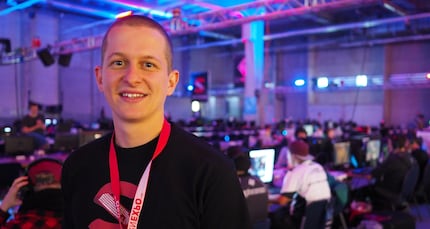
After that, the trade fair management asked us if we would like to take over the entire lower area. So we not only organised the LAN party, but also the e-games in the hall next door. That meant a lot of extra work. We had to acquire manufacturers, design stand concepts and finally take care of the set-up. Although the LAN party was twice as big, it almost became a minor matter. We then realised that we needed to professionalise ourselves. We are actually a duo. My colleague Andy Megert is the technician and responsible for infrastructure and is actually in charge. I'm primarily responsible for Marketing because I'm also studying it. Last year it was just the two of us, but now there are about ten of us - volunteers, of course. We take it seriously and plan as far ahead as possible. This year, we started planning back in May.
This huge turnout is actually amazing when you consider that LAN parties once almost completely disappeared from the scene.
That's because of online games. In the past, gamers almost had to go to a LAN to play multiplayer games. Today, you don't even have to leave the house and can still game with friends and opponents from all over the world, which is why we position Switzerlan a bit like a kind of music festival for gamers. You come here to meet your mates. Socialising is important. Almost more important than the gaming itself. We have a lot of young guests. However, our regulars, who have been coming to our LANs for years, are a bit older.
However, our goal is deliberately to attract young gamers as well, and this works extremely well with such large events. Families also watch us play at a location like this. Families are usually very interested and we can talk to them directly. We show them that a LAN party is a cool thing. For young gamers who have never seen anything like this before, the sight of 1000 gamers in one room is very impressive and perhaps convinces them to take part themselves. We see one of our main challenges in finding new gamers for the party and thus also new talent.
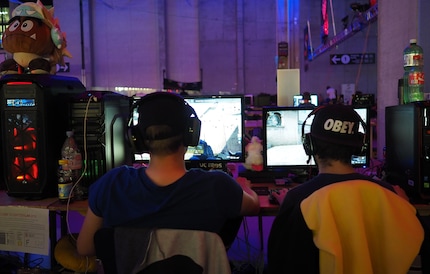
But LAN parties were certainly bigger in the past: We've seen pictures of a LAN party in Bern's Festhalle. There were probably around 2000 people there - all with their fat tube screens. The picture is about 15 years old and it's amazing how different the parties are. But I don't think those people, the audience from back then, come today. I was at the Dreamhack in Norway. It's extreme there. You meet eight-year-olds there. They can't even carry their PC into the hall themselves. Their parents do that and then set it up together. In the north, or abroad in general, gaming is much more part of the culture. They even have their own U18 area at Dreamhack (laughs). That was a tiny part of the LAN and the people there looked just like us. At Dreamhack, the participants are much older on average. That's why their junior area looks quite similar to Switzerlan.
What's the hardest thing about organising such a huge LAN?This time? Network cables (laughs)! We had ordered them months ago. They still weren't there on Monday, not on Tuesday, not on Wednesday. The supplier really took the piss out of us. We then had to improvise and buy cables at the last minute. No idea where we got them now - maybe from digitec (laughs).
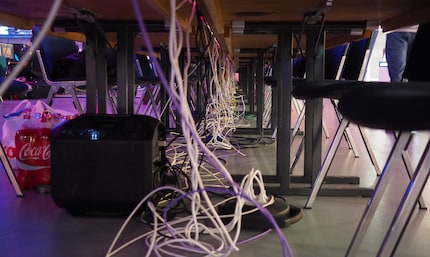
Who can take part in your tournaments?
Anyone can take part. We have around 15 tournaments. Not all of them are attended by the top players, so everyone has a chance of winning. There are also fun tournaments like "Age of Empires 2". Sure, the top players are in Counter-Strike and Hearthstone, but there's a group stage and you're not knocked out after the first game, as would be the case in the knockout system.
You organise various tournaments during the LAN. You are also the project manager of the largest eSports team in Switzerland called mYinsanity. What do you think of the trend in Switzerland?
Esports is growing constantly, but I think there will be a boom in the coming months. UPC recently launched a new portal with eSports.ch. That's what eSports needs: content. It's like traditional sport. You need viewers and fans. That's how you finance the whole thing. You have to report on it and make it interesting for fans. That's why I think eSports.ch will be extremely helpful. Then Saeg was also founded - the Swiss Association for eSports and Gaming. Raiffeisen is a partner there.
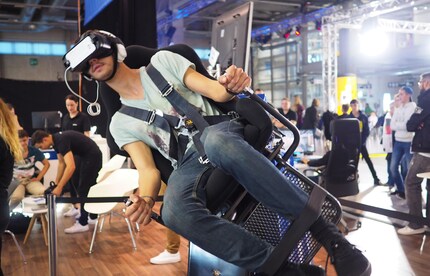
This is certainly also an important sign when a traditional bank like Raiffeisen suddenly focusses on eSports.
Absolutely. It's the first time in the world that a bank has sponsored eSports. Previously it was the hardware manufacturers. Then came Coca Cola and Red Bull, which also makes sense. Gamers are big fans of caffeinated drinks. It's a big leap from drinks to a bank or an insurance company - but we've found Mobiliar as a sponsor. I think the whole thing will pick up quite a bit in Switzerland next year.
So you think you first need a solid foundation to popularise the sport?
Competition for eSports is real sport. You watch Swiss sport, for example, because you live in Basel and are a fan of FC Basel. You follow the progress of matches and the careers of footballers in the media. There are sports newsrooms everywhere with big budgets that do documentaries, home stories and whatnot. People are fans of the brand and the players.
It's the same with eSports. You watch gamers play because of their personality. If you want to see the best, you don't watch the Swiss. So the Swiss need a unique selling point (USP). That's why you have to introduce the players. They're your neighbours or the guys from the next town over. Personalities are important. Then the emotions kick in and you are much more likely to switch on. The local scene needs Swiss-German casters who regularly flicker across the screens and become favourites of the Community. In a scene as tightly knit as eSports, everything is connected.
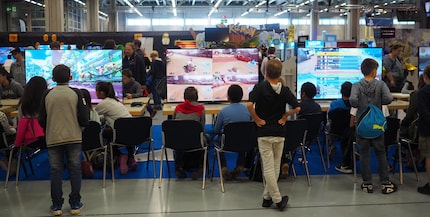
Nintendo and Sony are also on site with their games.
Next to the Switzerlan is the E-Games Hall, which you have also organised. What can you see there?
Playstation and Nintendo are presenting their new products there. Other manufacturers will be showing their hardware, VR goggles and much more. A drone race will be held as a special event. Visitors can game at most of the stands themselves, including games from Swiss developers who will be showing their games here. There are also two large stages for eSports and entertainment, where cosplay events take place, for example.
Suisse Toy has made quite a name for itself in the gaming sector, but compared to Germany, where various gaming events have been taking place for over ten years, there's no comparison.
Switzerland is simply lagging behind everywhere. Of course, the country is also very small. If an exhibitor already has a huge stand in Cologne, they don't come to Switzerland again. Cologne is enough to cover half of Europe. Nevertheless, we are surprised at how well we managed to fill this hall.
You can find out more about Manuel Oberholzer's eSports projects here.
As a child, I wasn't allowed to have any consoles. It was only with the arrival of the family's 486 PC that the magical world of gaming opened up to me. Today, I'm overcompensating accordingly. Only a lack of time and money prevents me from trying out every game there is and decorating my shelf with rare retro consoles.
From the latest iPhone to the return of 80s fashion. The editorial team will help you make sense of it all.
Show all